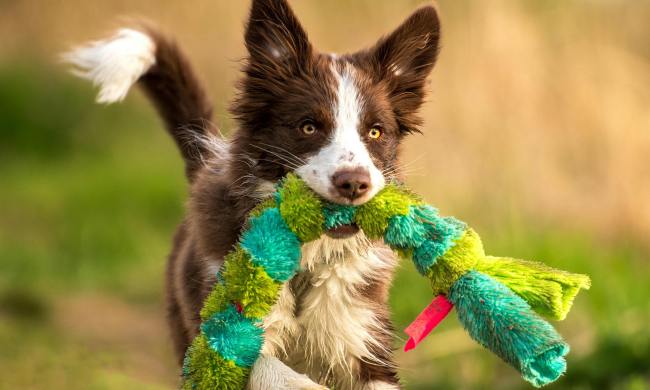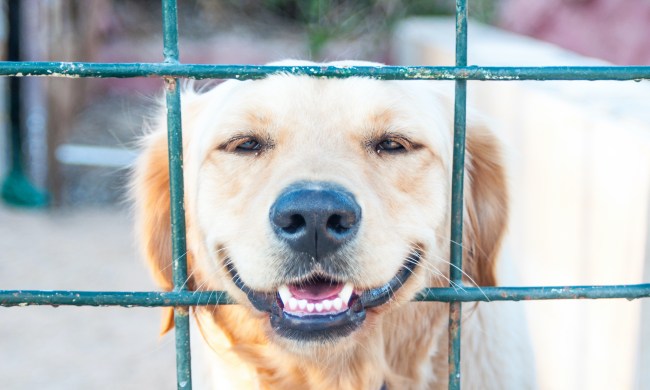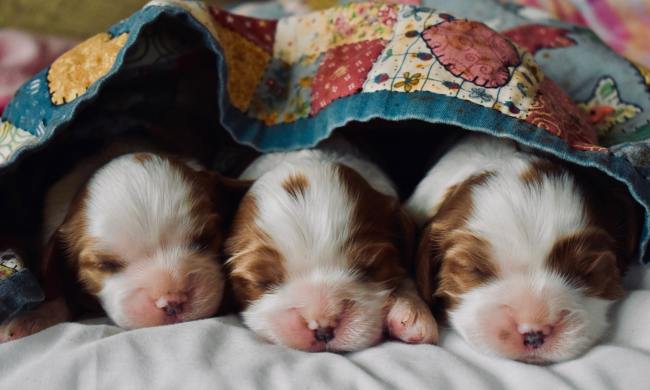A rainy forecast might have you rolling your eyes and wishing for that extra cup of coffee, but your furry friend may not feel the same way. Of course, they’re not the ones driving in wet-weather traffic and dodging umbrellas every couple of steps, but it just might leave you wondering — do dogs like rain?
You may know the answer already; some dogs are very headstrong when it comes to their weather preferences. You may notice them refusing to leave the house at all, or they may be scratching at the door in excitement. Most pups’ reactions will fall somewhere in between.
No matter what your dog thinks of the rain, there are bound to be some questions about walking in wet weather. Worry no more — here’s what you need to know before the next storm sets in.
Is it bad for dogs to be in the rain?
In the same way that most healthy people will be just fine spending a moderate amount of time in the rain, so will most healthy dogs. Of course, there will always be a possibility of your pup picking up an illness while out in a storm, but there’s a lot you can do to prevent this from happening.
Bacteria and toxins in water, for example, are more common — and more avoidable — than you think. Puddles and old water can contain infectious diseases like leptospirosis and giardia, which a pup can pick up on their paws from simply walking by, Dr. Michelle Danna told PetMD. There could also be traces of harmful chemicals, like motor oil or weed killer, in the water, so make sure to supervise your best buddy while outdoors, she said.
Toxins or not, it can be helpful to wash and dry off your dog’s paws when you come back inside. Tools like the Paw Plunger will make it a quick and easy task, though your dog may need a little time to get used to their paws being touched. Just keep at it!
To be clear — there are few risks when a dog spends a moderate amount of time outdoors in wet weather, as long as a few precautions have been taken. No dog should be left in the rain all day or night, nor should they go without some form of shelter to stay dry.
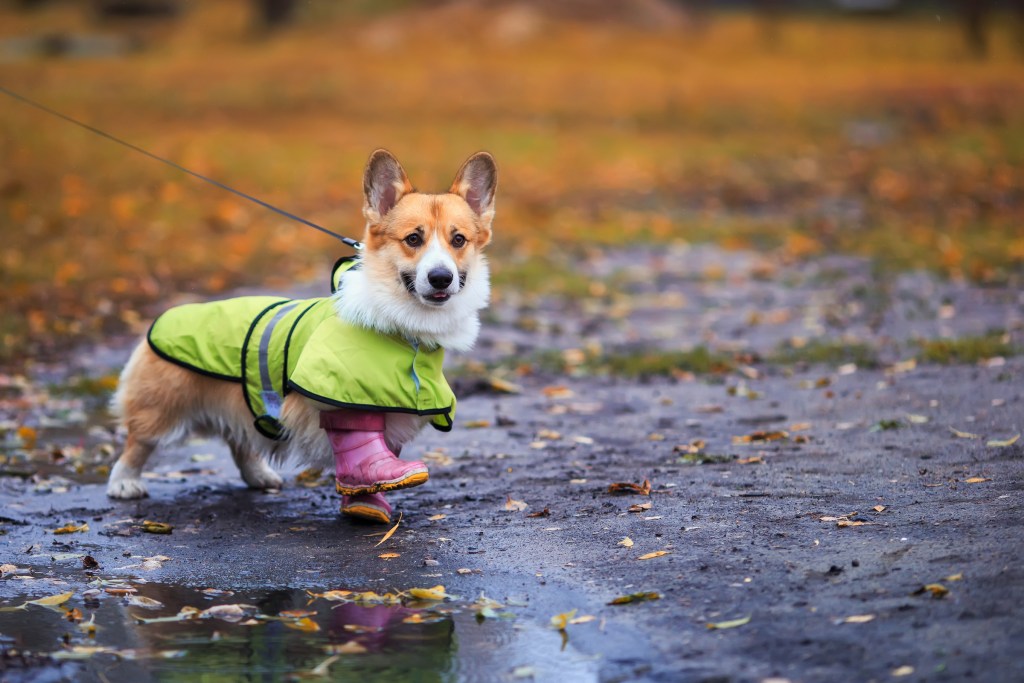
Do dogs like to walk in the rain?
As for walking in the rain, things get a bit more complicated. Some dogs love walking so much that they barely notice the weather, while others have severe issues relieving themselves when the sky opens up. Whichever kind your dog is, though, a short walk has the potential to get their digestive system moving no matter the weather. Certified Professional Dog Trainer Adrienne Farricelli recommends not skipping rainy-day walks for this very reason, though it has many other benefits as well.
Taking a short potty break or walk on gloomy days can help your pup get used to that kind of weather. It may take a few tries before they start to truly relax, but it will happen.
Farricelli suggests enjoying a fun activity together — even just giving their ears a rub — to help them create a more positive association with the rainfall. Going about your (somewhat) normal routine despite a sprinkle will show your pup that it’s really no big deal!
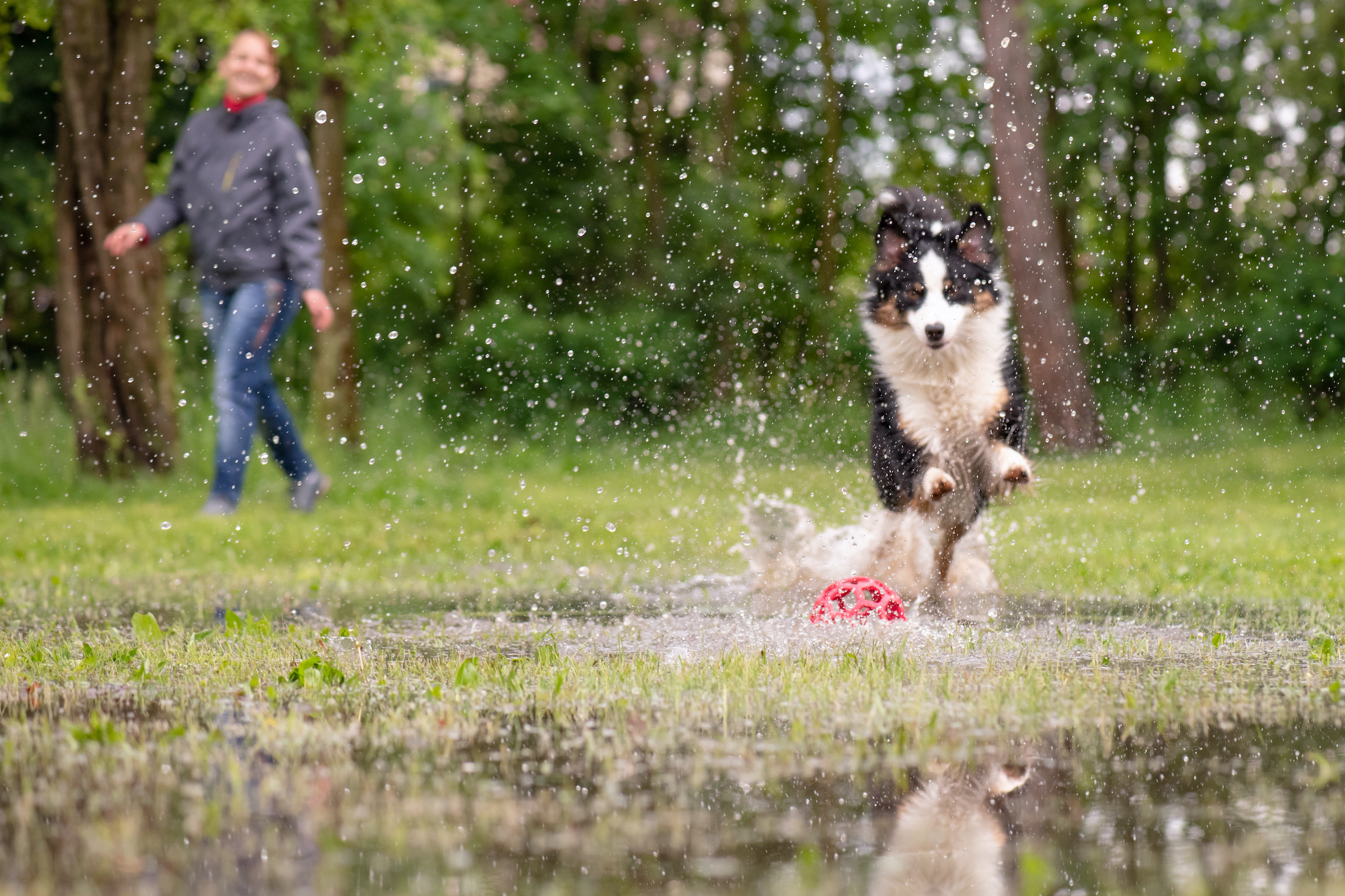
What to do for your dog when it rains
Whether or not your dog actually likes walking in the rain, it’s important to help your dog tolerate it, at least for the sake of potty breaks. Luckily, exposure training isn’t the only thing you can try.
A lot of four-legged friends will feel less bothered by the elements when they’re wearing a doggy raincoat. Not every pup will need this, though, since some breeds already sport waterproof coats. Still, it’s worth a try if you think your dog may be cold or too wet from short trips outside. Rain boots are another great option to keep paws dry and out of dirty water, though fewer dogs seem to be fans of this accessory.
There are some cases when exposing your dog to the rain for potty breaks just isn’t possible. Whatever the circumstances may be, there is always one indoor option to try: the potty pad. This tool was developed to keep floors protected while allowing a dog to relieve themselves indoors, though, like any new routine, it could take some time for your pup to get used to the idea. While this isn’t an ideal replacement for walks, it can at least give your dog a place to go.
The absolute best thing you can do for your best buddy is keep them safe, so make sure to look out your window before getting your dog ready to go out in the rain. Even though the precipitation itself isn’t harmful to your pet, other weather conditions certainly could be. If you’re struggling with visibility or staying comfortable — so is your dog!
However, you decide to tackle the wet weather, know that it’s perfectly okay to take your dog for a walk in the rain. Potty breaks and even a little playtime won’t hurt, though whether your pup actually likes the rain is a whole different story.

